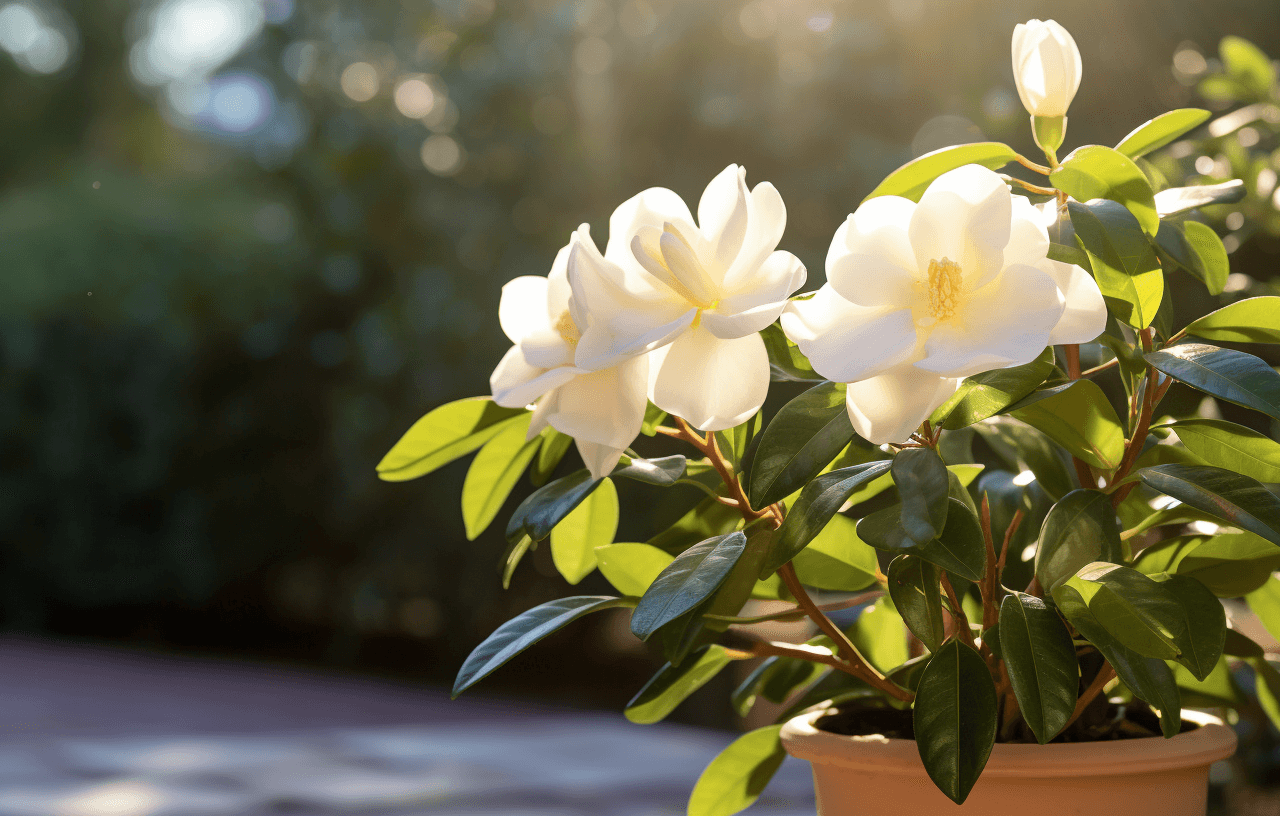Gardenia – Growing and Care Guide

Amidst the myriad of garden blooms, the gardenia stands out with its pristine, porcelain-like flowers and an aroma that evokes a sense of nostalgia. But behind this delicate facade is a plant that, while a touch finicky, can thrive under the right care. Let’s dive into the nuanced world of growing and caring for gardenias.
Choosing Your Spot
Gardenias are evergreen shrubs that love light, but not the harsh midday sun. Find them a spot that gets morning sunlight and dappled shade in the afternoon. This balance ensures they’re energised without getting scorched.
Soil Matters
Gardenias are acid-loving plants, preferring a pH of 5.5 to 6.5. A blend of peat moss, sand, and organic compost can create the perfect bed. Remember, the soil should retain moisture without waterlogging the roots and when picking your planting hole, you should ensure that you pop in some potting soil for initial nutrients.
Watering Gardenias
Consistency is key. The plant dislikes drying out, but they’re equally averse to sitting in water. Keep the soil consistently moist, using a soft spray to water, mimicking nature’s gentle rain and providing the proper care will help you avoid any unsightly yellow leaves.
Temperature and Humidity
These plants are drawn to warmth and humidity. Aim for temperatures of 65-70°F during the day and about 10 degrees cooler at night. If you’re growing indoors or in drier climates, consider placing a humidifier nearby or setting the pot atop a tray filled with pebbles and water to boost humidity.
Gardenia Fertilizer
Every 2-4 weeks during their growing season (March to October), offer them a feed of acid-based fertiliser. This consistent nourishment helps in prolific blooms and lush foliage of white blooms and dark green leaves.
Pruning a Gardenia
Once the blooms have had their curtain call, it’s pruning time. Deadhead any faded flowers and any leggy branches. This not only shapes the plant but also encourages more of their fragrant blooms.
Keep Pests at Bay
Aphids and spider mites might show interest in your gardenias. A gentle spray of soapy water or neem oil can deter these unwelcome guests, ensuring your plant remains in its best health. If slugs or snails are an issue, then maybe try one of our top natural slug repellents to keep them at bay.
Conclusion
With their intoxicating fragrance and timeless beauty, these flowers are a treasure in any garden. While they demand attention to detail, the rewards are well worth the effort. So, immerse yourself in the sensory delight of growing gardenias, and let their elegance and aroma become a cornerstone of your garden sanctuary.
Gardenia Frequently Asked Questions
Do Gardenias like shade?
How to transplant gardenias?
– Choose an overcast day to minimise transplant shock.
– Prepare the new location or pot first. Ensure the soil is slightly acidic and well-draining.
– Water the gardenia well a few hours before the move.
– Dig around the gardenia, aiming to keep as much of the root ball intact as possible.
– Gently lift the plant and move it to the new location.
– Plant the gardenia at the same depth it was previously growing.
– Fill in with soil, water well, and mulch around the base to maintain moisture.
– Keep an eye on the transplanted gardenia over the next few weeks, ensuring it remains well-watered as it establishes.






